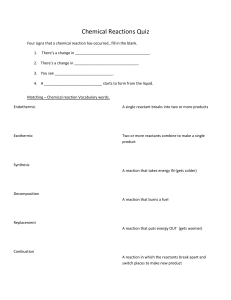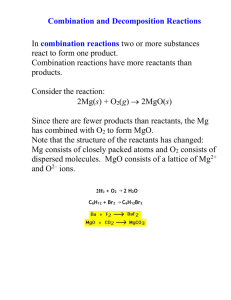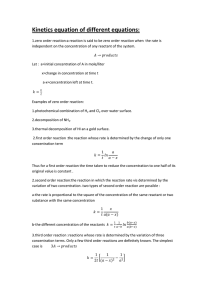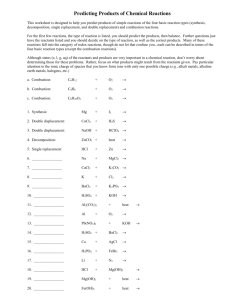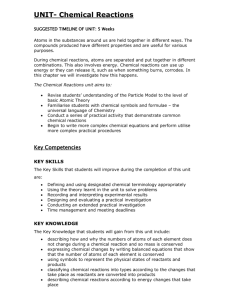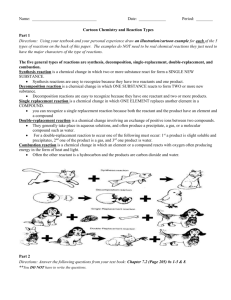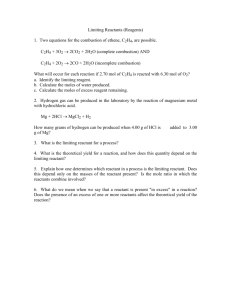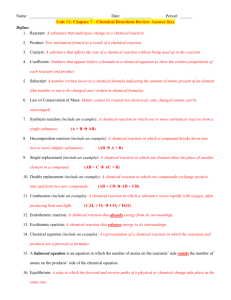Investigate changes in mass for chemical and physical processes
advertisement
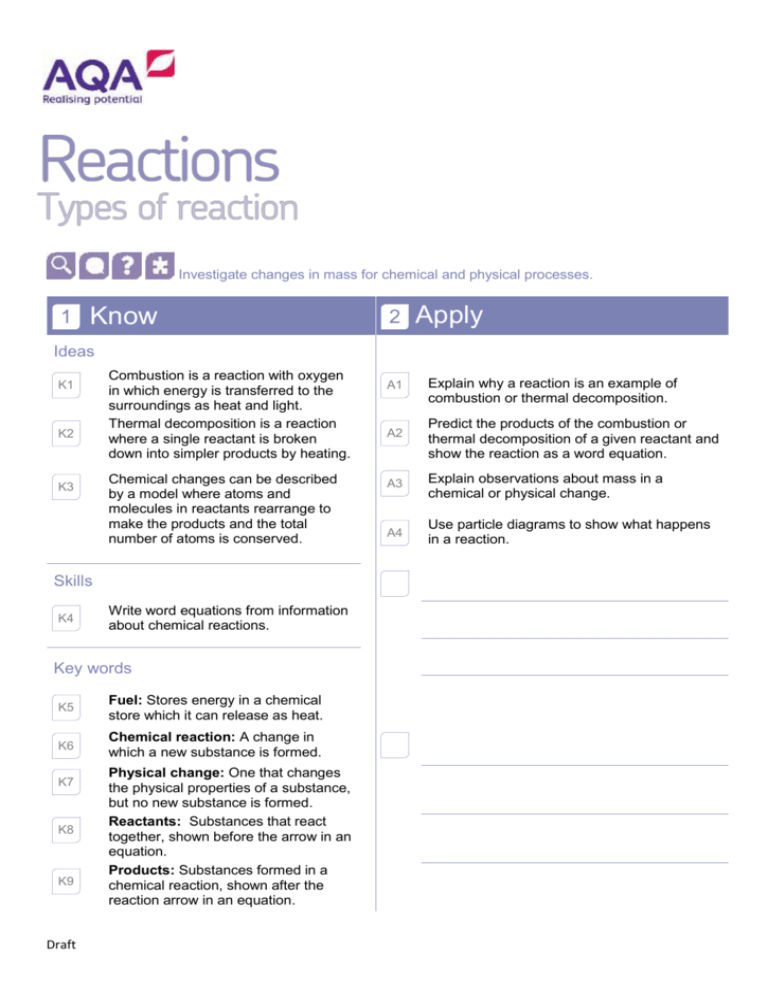
Investigate changes in mass for chemical and physical processes. 1 Know 2 Apply Ideas K1 K2 K3 Combustion is a reaction with oxygen in which energy is transferred to the surroundings as heat and light. Thermal decomposition is a reaction where a single reactant is broken down into simpler products by heating. Chemical changes can be described by a model where atoms and molecules in reactants rearrange to make the products and the total number of atoms is conserved. Skills K4 Write word equations from information about chemical reactions. Key words K5 Fuel: Stores energy in a chemical store which it can release as heat. K6 Chemical reaction: A change in which a new substance is formed. K7 K8 K9 Draft Physical change: One that changes the physical properties of a substance, but no new substance is formed. Reactants: Substances that react together, shown before the arrow in an equation. Products: Substances formed in a chemical reaction, shown after the reaction arrow in an equation. A1 Explain why a reaction is an example of combustion or thermal decomposition. A2 Predict the products of the combustion or thermal decomposition of a given reactant and show the reaction as a word equation. A3 Explain observations about mass in a chemical or physical change. A4 Use particle diagrams to show what happens in a reaction. K10 Conserved: When the quantity of something does not change after a process takes place. 3 Extend E1 Compare the pros and cons of fuels in terms of their products of combustion. E2 E3 Draft Use known masses of reactants or products to calculate unknown masses of the remaining reactant or product. Devise a general rule for how a set of compounds reacts with oxygen or thermally decomposes. E4 Balance a symbol equation.
